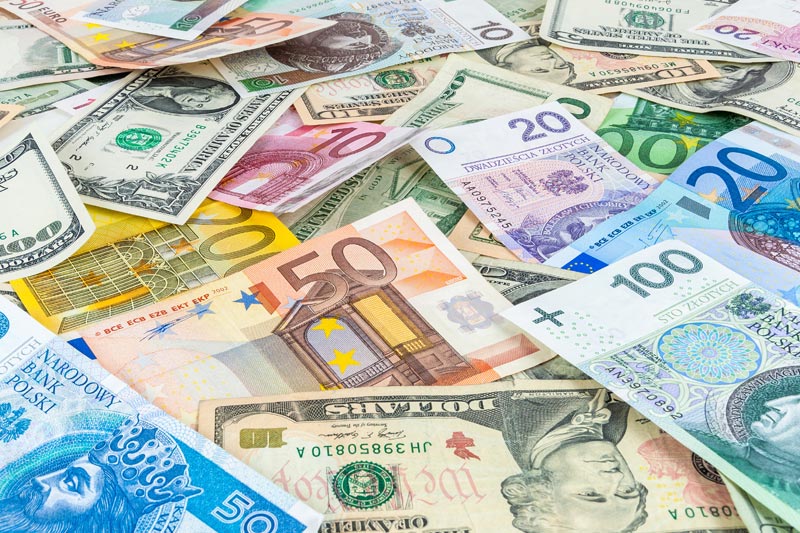 Bank of Japan’s Kuroda Faces Tough Task to Persuade Markets He Won’t Pivot
Bank of Japan’s Kuroda Faces Tough Task to Persuade Markets He Won’t Pivot
(Bloomberg) -- Bank of Japan Governor Haruhiko Kuroda faces a growing challenge to convince investors that a policy pivot isn’t on the horizon following a wave of hawkish turns by global central bankers.
Kuroda continues to insist that the BOJ’s yield control framework is firmly bolted down without any tinkering under consideration given continued weakness in Japanese price growth. But he may need to take action as early as Wednesday to shore up that stance.
The rising tide of worldwide yields has reached Japan, pushing 5-year and 10-year rates to the highest levels since 2016. The moves suggest that sooner or later the central bank will have to back up its message with actions instead of words.
“At this point, the market needs to see the BOJ affirming its easing commitment through actual steps,” said Yoshimasa Maruyama, chief market economist at SMBC Nikko Securities. “Speculation over possible policy adjustments will only ease once the BOJ jumps in to stop yield rises.”
Kuroda remains the last staunch dove at the world’s biggest central banks outside of China, after European Central Bank chief Christine Lagarde last week swiveled in the direction of tightening policy and Reserve Bank of Australia Governor Philip Lowe sketched out an interest-rate-hike scenario this year as inflation strengthens.
But Kuroda is already in his last full year at the helm of the BOJ, and investors are looking beyond his stimulus-focused stance to a future track toward possible policy normalization.
To some degree the BOJ has been here before. In 2018, speculation of policy adjustments rocketed during a previous Federal Reserve tightening cycle. The BOJ defended its yield target range at that time right up to an announcement of adjustments, an about-turn that continues to feed ongoing chatter now.
Higher foreign ownership of Japanese bonds this time around means that more of a tussle could lie ahead as the BOJ looks to keep markets in line.
The yield on the 10-year JGB reached 0.21% on Tuesday, its highest since January 2016 and within sight of the BOJ’s ceiling of around 0.25% above its zero target.
“I think the BOJ will refrain from taking any action until the 10-year yield reaches 0.25%,” said Ayako Sera, a market strategist at Sumitomo Mitsui (NYSE:SMFG) Trust Bank Ltd. in Tokyo. She thinks moving too soon risks overplaying the bank’s dovish position and causing an unpopular weakening of the yen.
The next watchpoint for observers of the standoff between bond traders and the BOJ comes Wednesday morning with a scheduled bond-buying operation. According to the central bank’s quarterly purchase schedule, it should swoop into the market for 425 billion yen ($3.7 billion) of JGBs in the five to 10-year range.
If the BOJ buys more it will be the first concrete action to stem the latest wave of yield gains. Like Sera, though, most analysts expect the central bank to resist the temptation to act until it becomes absolutely necessary.
“It’s more difficult for the BOJ now than in the past to prevent Japanese yields from following rising overseas yields due to foreigners’ increased holdings of yen assets and the higher correlation between local and overseas markets as a result,” said Takahiro Sekido, chief Japan strategist at MUFG Bank Ltd. in Tokyo.
Should markets continue to test the BOJ’s resolve, the bank may go straight to its heavy weaponry in the form of a fixed-rate operation that more clearly marks out its line in the sand. It could later offer a rate below the current market yield, essentially offering a payout for any bond holder who wants to grab it.
While costly for the BOJ, that’s a hugely potent weapon that has worked so far to bring speculators to heel.
At the verbal level, Kuroda already appears to have pulled out all the stops.
The bullish message that 2% price growth is looming marked the first years of Kuroda’s leadership at the BOJ. But that signaling has long since turned 180 degrees as the governor now touts distant inflation as a justification for continuing with the BOJ’s stimulus program.
He ruled out the chance of looming policy normalization at a press conference in January after the bank forecast price growth of little more than half its 2% target in the years through early 2024.
He even denied the possibility of raising interest rates before stable inflation was attained, going beyond a BOJ policy statement commitment just to increase the monetary base until then. Some of his colleagues on the board have also weighed in.
“The BOJ board members’ clear denial of a possible rate hike has had a strong effect,” Chotaro Morita, chief rates strategist at SMBC Nikko Securities Inc., wrote in a note.
“There’s a strong belief in the market that the BOJ won’t abandon its 0.25% ceiling without making a formal decision first,” he added, contrasting the BOJ’s stance with the RBA’s abandoning of yield curve control last year.
Still, it’s getting harder for Kuroda to be persuasive on the BOJ’s future policy direction.
“It’s still vivid among investors that Kuroda introduced negative rates a few days after he clearly denied it,” said Hiroshi Shiraishi, a senior economist at BNP Paribas (OTC:BNPQY) SA, referring to an unpopular surprise the governor pulled in 2016.
“Investors also know it’s hard to flag a shift in the yield curve control well in advance,” Shiraishi said. “Because if you did, it would cause sharp volatility in the market.”
©2022 Bloomberg L.P.

